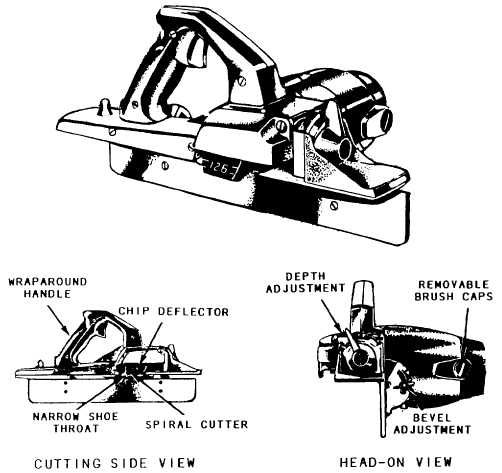Portable Power Plane
The portable electric power plane (figure 3-23) is widely used for trimming panels, doors, frames, and so forth. It is a precision tool capable of exact depth of cut up to 3/16 inch on some of the heavier models. However, the maximum safe depth of cut on any model is 3/32 inch in any one pass.
The power plane is essentially a high-speed motor that drives a cutter bar, containing either straight or spiral blades, at high speed.
Operating the power plane is simply a matter of setting the depth of cut and passing the plane over the work. First, make careful measurements of the piece, where it is to fit, and determine how much material has to be removed. Then, the stock being planed should be held in a vise, clamped to the edge of a bench, or otherwise firmly held. Check the smoothness and straightness of all the edges.
If a smoothing cut is desired, make that cut first and then recheck the dimensions. Make as many passes as necessary with the plane to reach the desired dimensions, checking frequently so as not to remove too much material. The greater the depth of the cut, the slower you must feed the tool into the work. Feed pressure should be enough to keep the tool cutting, but not so much as to slow it down excessively. Keep wood chips off the work because they can mar the surface of the stock as the tool passes over them. Keep your hands away from the butterhead or blades when a cut is finished.
The L-shaped base, or fence, of the plane should be pressed snugly against the work when planing, assuring that the edge will be cut square. For bevel cuts, loosen the setscrew on the base, set the base at the desired bevel, and then retighten the setscrew.

Figure 3-23.-Portable electric power plane.
Continue Reading